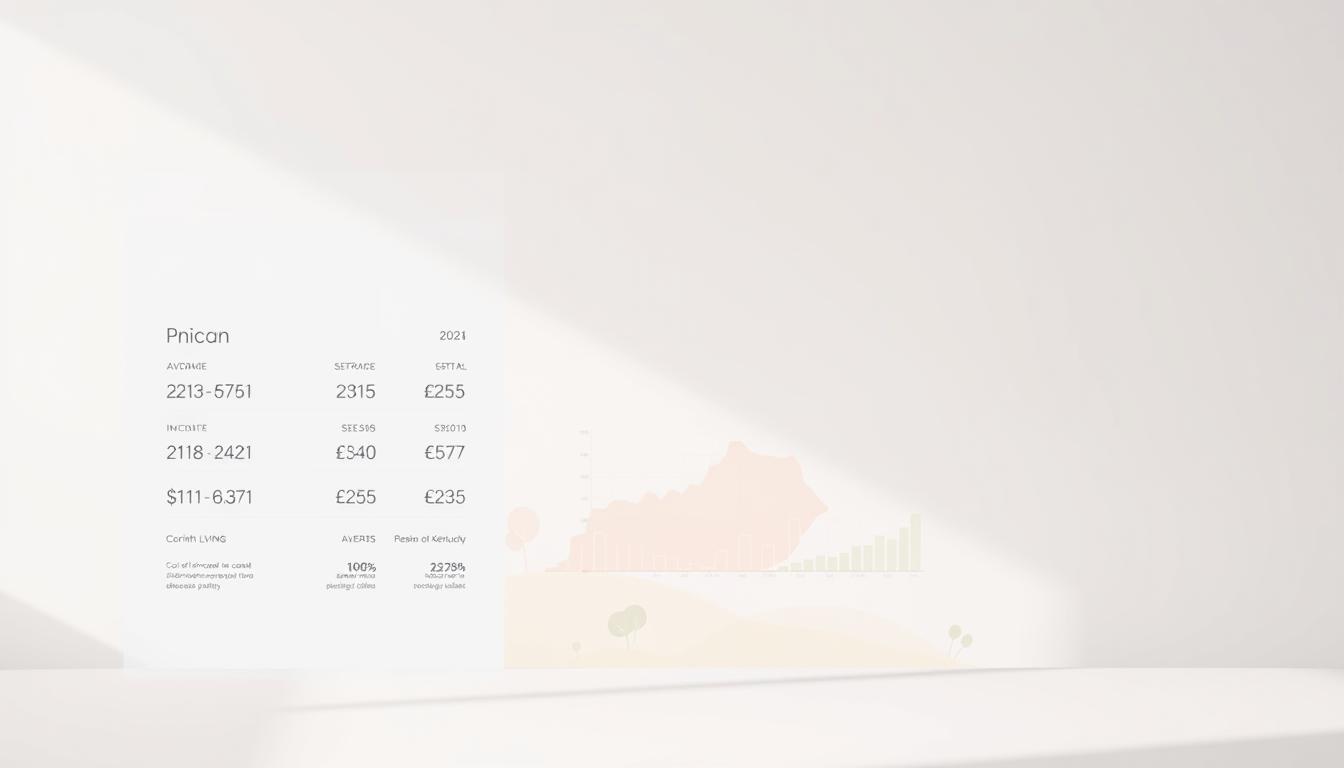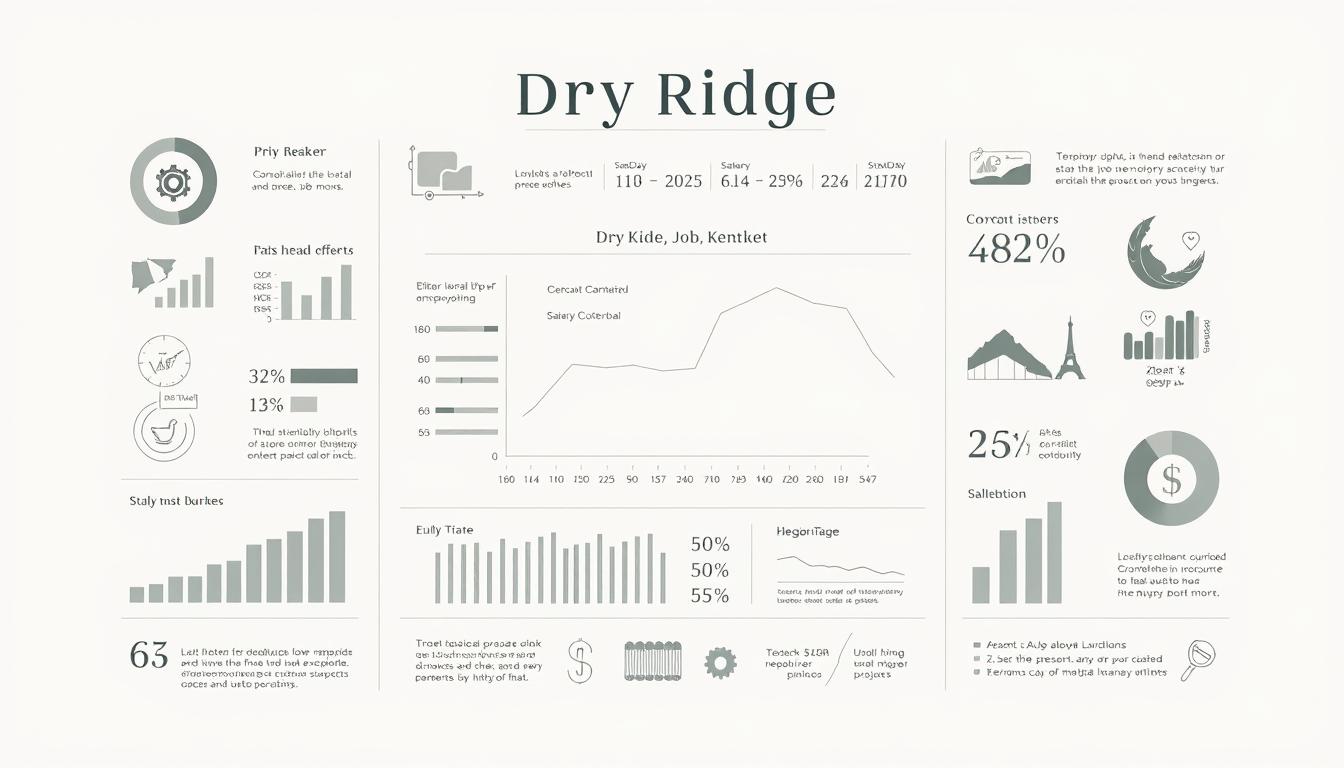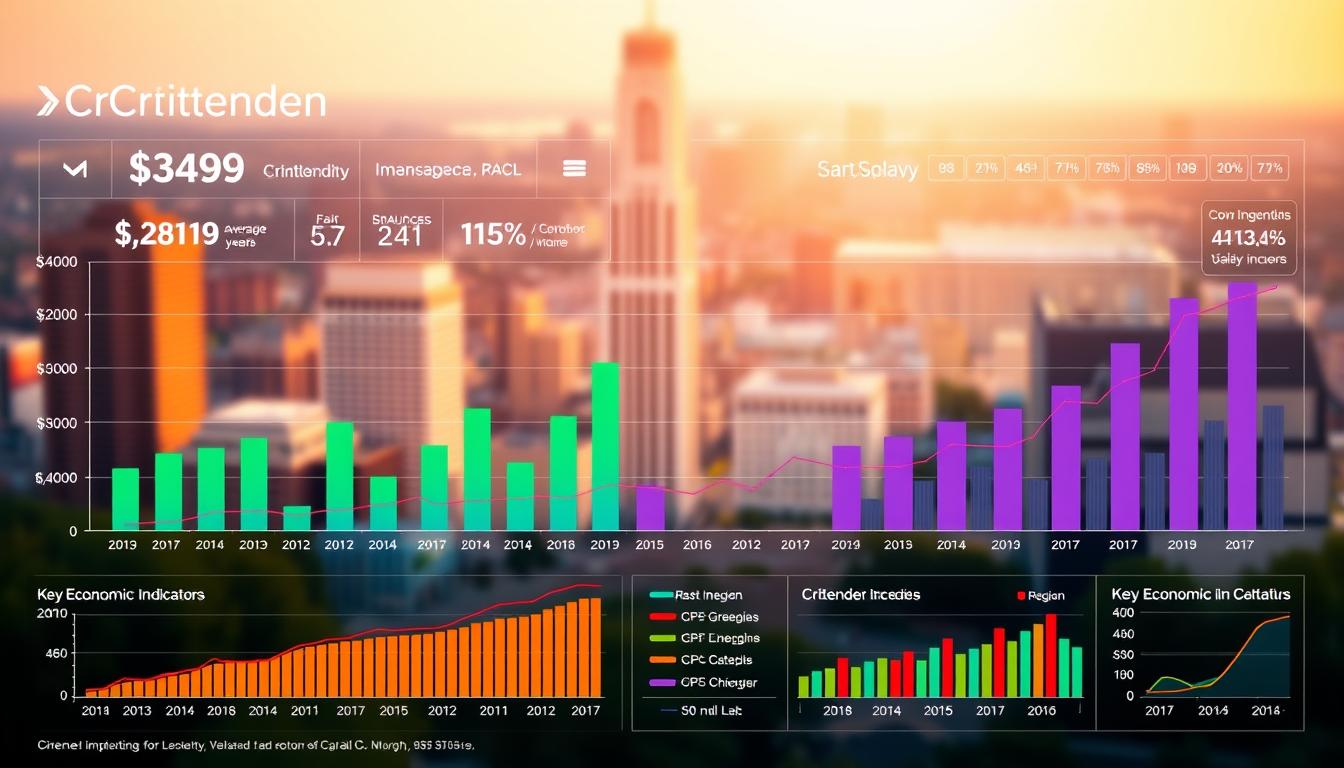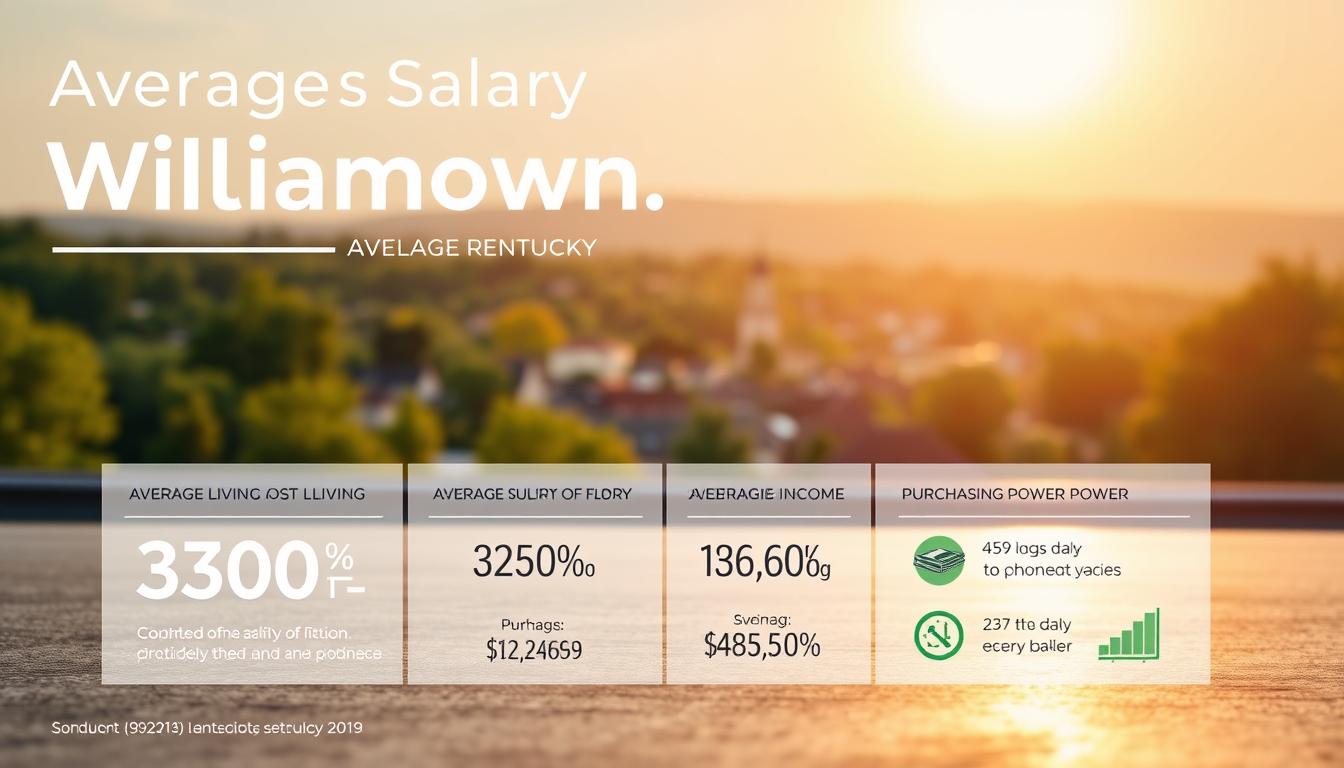Did you know that 83% of hiring managers still read application documents beyond resumes? This surprising statistic shows why job seekers need strong written introductions to stand out in today’s competitive job market.
Your application documents are your first impression with potential employers. They connect your qualifications with the job you’re applying for. The right approach can greatly improve your job search success.
RoboApply’s AI tools make this important process easier. Our platform uses smart writing help and ATS optimization to make your documents stand out. You’ll see how our grammar checker and automated builder can boost your applications.
This guide offers practical, ready-to-use templates for different industries and roles. You’ll find professional cover letter samples that show effective techniques for various career levels. Each template comes with tips to help you write compelling stories that grab hiring managers’ attention.
Key Takeaways
- Application documents remain essential despite digital hiring trends
- Effective writing should be 250-400 words and position-specific
- AI tools like RoboApply can optimize your application process
- Industry-specific templates provide proven frameworks for success
- Proper formatting and ATS optimization increase visibility
- Personalization for each role significantly improves response rates
Understanding the Importance of a Cover Letter
Cover letters play a key role in job applications today. They are more than just a formality; they are a chance to stand out. Your cover letter is the first thing employers see, setting the tone for your application.
Even with the rise of digital hiring, cover letters are still crucial. They add context that resumes can’t. Studies show they greatly influence hiring decisions, making them essential for job seekers.
What is a Cover Letter?
A cover letter is a one-page introduction to potential employers. It highlights your professional background and shows your communication skills. Best cover letter formats usually have three to four paragraphs that link your experience to the job requirements.
Cover letters let you share your personality and explain why you’re interested in the job. They bridge the gap between your skills and what the employer needs. Effective cover letter tips suggest using stories and personal touches responsibly.
The typical structure includes an introduction, body paragraphs, and a closing with a call to action. Modern best cover letter formats focus on being clear, concise, and relevant to the job.
Why Do Employers Value Cover Letters?
Employers value cover letters for the communication skills they show. These documents reveal how well you organize your thoughts and tailor your message. Effective cover letter tips stress the importance of showing you fit the company culture and are genuinely interested in the role.
Cover letters also show your research skills and attention to detail. Employers can see if you understand their values and what the job entails. Well-written letters using best cover letter formats show your professionalism and commitment.
They also help employers distinguish between candidates with similar skills. Cover letters reveal your motivation, enthusiasm, and ability to clearly explain your value. This is crucial in competitive job markets.
Common Mistakes to Avoid
Using generic templates is a common mistake. Many candidates send the same letter for different jobs, not tailoring it to each opportunity. Effective cover letter tips advise on personalizing your letter for each job.
Spelling and grammar errors can instantly disqualify you. These mistakes show you’re careless and lack attention to detail. RoboApply’s grammar checker helps avoid these errors, ensuring your letter looks professional.
Another mistake is focusing too much on what you want from the job. Candidates often talk about their needs rather than what they can offer. Best cover letter formats focus on showcasing your value and achievements.
| Common Mistake | Impact on Application | Solution Strategy | RoboApply Feature |
|---|---|---|---|
| Generic Content | Immediate rejection | Customize for each position | Template customization tools |
| Grammar Errors | Unprofessional impression | Thorough proofreading | Grammar checker |
| Wrong Format | ATS filtering issues | Use standard formats | ATS optimizer |
| Excessive Length | Reduced readability | Keep to one page | Length optimization |
Not optimizing for Applicant Tracking Systems (ATS) is another big mistake. Many companies use these systems to filter applications before they even reach a human. RoboApply’s ATS optimizer ensures your cover letter meets technical requirements while remaining readable and impactful.
Understanding these basics helps you create compelling cover letters that enhance your resume. The next sections will dive into specific elements and techniques for making your applications stand out, grabbing employer attention, and landing interviews.
Essential Elements of a Strong Cover Letter
Every successful cover letter has key elements that make it stand out. When you look at professional cover letter samples, you’ll see patterns that make some applications shine. These elements work together to tell a story that grabs the hiring manager’s attention and shows your worth.
Knowing these elements helps you write cover letters that work. Each part has a role in showing why you’re the right fit for the job. Let’s explore the main elements that make cover letters effective.

Addressing the Hiring Manager
Your cover letter’s greeting sets the tone for the rest of the letter. Using generic greetings like “To Whom It May Concern” shows you didn’t try hard enough. Instead, take the time to find the person who will read your application.
Start by looking for contact names in the job posting. Check the company’s website, LinkedIn, or call them. When you find the hiring manager’s name, use this format:
- Dear Ms. Johnson,
- Dear Mr. Rodriguez,
- Dear Dr. Chen,
If you can’t find a specific name, use alternatives like “Dear Hiring Manager” or “Dear Marketing Team Lead.” This shows you put in effort without being too casual.
Clear Introduction and Purpose
Your opening paragraph should quickly tell why you’re writing and what you can offer. Top cover letter templates grab attention in the first two sentences. Start with something that shows your qualifications or your excitement for the role.
Here’s a good way to start:
“I am writing to express my strong interest in the Marketing Coordinator position at ABC Company. With three years of digital marketing experience and a proven track record of increasing social media engagement by 150%, I am excited to contribute to your team’s continued success.”
This introduction is effective because it clearly states the position, mentions your experience, and shows a measurable achievement. Avoid weak starts like “I am writing to apply for the position I saw advertised.” Lead with your strongest point or most relevant experience.
Your introduction should also show you’ve done your homework on the company. Mention recent news, company values, or projects that match your background. This shows you’re genuinely interested and have done your research.
Highlighting Relevant Experience
The body of your cover letter should connect your experience to the job requirements. This section turns your resume bullet points into stories that show your impact and value to the employer.
Focus on 2-3 experiences that match the job. Use the STAR method (Situation, Task, Action, Result) to structure your examples:
- Situation: Describe the context or challenge you faced
- Task: Explain what you needed to accomplish
- Action: Detail the specific steps you took
- Result: Share the quantifiable outcome
For example: “When our team faced declining customer retention rates (Situation), I was tasked with developing a new engagement strategy (Task). I implemented a personalized email campaign and loyalty program (Action), which resulted in a 35% increase in customer retention over six months (Result).”
Always include specific numbers, percentages, or measurable outcomes when possible. Hiring managers like concrete evidence of your skills. If you don’t have a lot of experience, talk about transferable skills, academic projects, or volunteer work that shows relevant abilities.
Make sure your experience highlights match the job’s key requirements. If teamwork is important, share an example of successful collaboration. If leadership is key, describe a time when you led others to success.
By mastering these essential elements, you’ll write cover letters that stand out. Each part works together to create a strong, persuasive document that opens doors to interviews.
Different Types of Cover Letters
Cover letters come in three main types, each with its own purpose. Knowing when and how to use them can help you connect better with employers. Whether you’re applying for a job, using a professional connection, or making new contacts, the right cover letter can make a big difference.
Each type of cover letter has its own tone and structure. You need to match your approach to your situation and goals. Let’s look at the three main types and when to use them.
Application Cover Letters
Application cover letters are for job postings. They are the most common type you’ll write. Your goal is to show how your skills match the job’s needs.
Start by addressing the hiring manager by name if you can. Mention the job title and where you found it. Then, explain how your experience fits their needs.
Here’s a practical example you can customize:
Dear Ms. Johnson,
I’m applying for the Marketing Coordinator job on your website. With three years of digital marketing and a 150% increase in social media engagement, I’m excited to join your team.
In my current role, I manage campaigns that meet your needs for content and analytics. My skills with Google Analytics and social media tools have brought over $50,000 in revenue this year.
I’d love to discuss how my experience can help your marketing. Thank you for considering my application.
Sincerely,
[Your Name]
Referral Cover Letters
Referral cover letters use your professional connections to get noticed. When someone recommends you for a job, this letter helps you make the most of it.
Mention your referrer’s name early. Explain how you know them and why they think you’re a good fit. This builds trust and credibility.
Use this template as your starting point:
Dear Mr. Davis,
Sarah Mitchell, your Senior Developer, recommended me for the Software Engineer role at Tech Solutions. She knows my experience in full-stack development and thinks I’d be a good fit.
I have five years of experience with React and Node.js, and a cloud architecture certification. At my current job, I’ve led the development of three major applications with over 10,000 users daily.
I’d love to discuss how my skills can help your team. Thank you for your time and consideration.
Best regards,
[Your Name]
Networking Cover Letters
Networking cover letters help you build professional relationships and find job opportunities. These letters are useful even when there’s no specific job posted. Your goal is to introduce yourself and explore possibilities.
Focus on what you can offer, not what you need. Research the company and mention projects that interest you. This shows you’re genuinely interested and prepared.
Here’s an effective networking approach:
Dear Ms. Rodriguez,
I’ve been following your company’s work on sustainable packaging, like your partnership with local recycling facilities. As a supply chain professional with eight years of experience, I’m impressed by your commitment to the environment.
My experience has reduced packaging waste by 40% and saved $200,000 annually. I believe my expertise in sustainable operations could help your growth.
I’d love to learn more about your projects and how I can contribute. Would you be available for a brief conversation soon?
Thank you for your time,
[Your Name]
These cover letter examples are ready-to-use templates for different situations. Always customize each letter for your specific situation and the company you’re targeting. The key is to match your approach to your goal and the relationship you’re trying to build.
Professional Cover Letter Examples for Various Fields
Your cover letter must speak the language of your target industry to make a lasting impression. Different fields value specific skills, achievements, and communication styles that reflect their unique professional standards.
These job application cover letter examples show how to tailor your message for three major industries. Each example uses field-specific terminology while maintaining clarity and impact.
RoboApply’s AI-powered cover letter builder automatically customizes these templates for your specific industry. The system recognizes field-specific keywords and adjusts content to match professional expectations in your target sector.
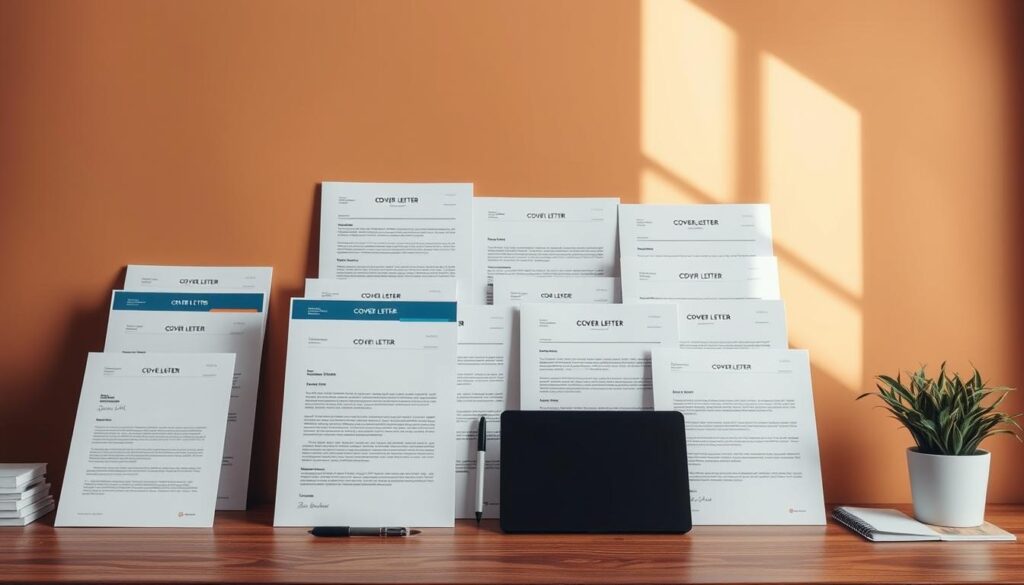
Marketing Cover Letter Example
Marketing professionals need to showcase creativity alongside measurable results. This example emphasizes campaign success and brand impact:
Dear Hiring Manager,
I am excited to apply for the Marketing Manager position at your company. With five years of experience driving brand growth through innovative digital campaigns, I have consistently delivered exceptional ROI for diverse clients.
In my current role at ABC Agency, I developed a multi-channel campaign that increased client revenue by 45% within six months. My expertise in social media strategy, content marketing, and data analytics has helped brands achieve measurable growth across competitive markets.
I excel at transforming creative concepts into actionable marketing strategies. My recent product launch campaign generated 2.3 million impressions and drove a 32% increase in qualified leads. I understand your company’s commitment to innovative marketing solutions and would bring fresh perspectives to your team.
I look forward to discussing how my proven track record in campaign management and brand development can contribute to your marketing objectives.
Sincerely,
[Your Name]
IT Cover Letter Example
Technology roles require demonstrating technical expertise while remaining accessible to non-technical hiring managers. This professional cover letter sample balances technical skills with business impact:
Dear Hiring Manager,
I am writing to express my interest in the Software Developer position at your organization. With seven years of experience in full-stack development, I have successfully delivered scalable solutions that improve operational efficiency and user experience.
My technical expertise includes Python, JavaScript, and cloud architecture using AWS and Azure platforms. At my current company, I led a team that developed a customer management system, reducing processing time by 60% and improving data accuracy across departments.
I thrive in collaborative environments where I can solve complex problems through innovative technology solutions. My recent project involved migrating legacy systems to modern frameworks, resulting in 40% faster load times and enhanced security protocols.
Your company’s reputation for cutting-edge technology solutions aligns perfectly with my passion for creating efficient, user-focused applications. I am eager to contribute my problem-solving skills and technical knowledge to your development team.
Best regards,
[Your Name]
Healthcare Cover Letter Example
Healthcare positions require emphasizing patient care, certifications, and compliance knowledge. This example demonstrates compassion alongside professional qualifications:
Dear Hiring Manager,
I am pleased to apply for the Registered Nurse position in your medical facility. With four years of experience in acute care settings, I am committed to providing exceptional patient care while maintaining the highest safety and quality standards.
My clinical experience includes emergency department nursing, where I managed critical patient cases and collaborated with multidisciplinary teams. I hold current certifications in BLS, ACLS, and PALS, ensuring I meet all regulatory requirements for patient care delivery.
I excel at building rapport with patients and families during challenging times. My compassionate approach, combined with strong clinical skills, has consistently resulted in positive patient outcomes and satisfaction scores above department averages.
Your facility’s commitment to patient-centered care resonates with my professional values. I am excited about the opportunity to contribute my clinical expertise and dedication to your healthcare team.
Respectfully,
[Your Name]
These job application cover letter examples show how industry-specific language and achievements create stronger connections with hiring managers. Each example focuses on relevant skills while maintaining professional tone and clear structure.
RoboApply’s intelligent system can adapt these templates to match your experience and target positions. The AI builder ensures your cover letter uses appropriate terminology and highlights the most relevant qualifications for your chosen field.
Tailoring Your Cover Letter to the Job Posting
Customizing your cover letter for each job you apply for can really boost your chances of getting an interview. Generic letters often get lost, but tailored ones show you care and have put in effort. It’s important to go beyond using the same template for every application. Instead, create content that matches each employer’s specific needs.
The key to a effective cover letter is to do thorough research and align your skills with the job. This makes your application stand out. When you understand the company and the role well, your application will grab the hiring manager’s attention right away.
Researching the Company
Begin by checking the company’s website, focusing on their mission, recent news, and culture. Look for how they describe their values and work environment. This helps you match their style in your cover letter.
Social media can also give you insights into the company’s personality and current projects. Look at their LinkedIn, Twitter, and Facebook for updates, employee spotlights, and industry involvement. Recent achievements or challenges can spark interesting conversations in your letter.
Industry publications and news articles can show the company’s market position and future plans. Knowing this helps you show how you can help them succeed. Use this info to highlight how your skills fit their goals.
Aligning Skills with Job Requirements
Compare the job posting requirements with your qualifications. Highlight the keywords and phrases from the job description in your cover letter. This makes your application more likely to pass through applicant tracking systems.
Focus on the most important qualifications first. Address these directly in your letter, using examples from your past experience. Even if you don’t meet every requirement, highlight your strongest matches and explain how your background adds value.
Use specific numbers to support your claims. Instead of saying you have “strong communication skills,” say you “increased team productivity by 25% through better communication.” These specific examples make your qualifications more memorable and believable.
RoboApply’s ATS optimization features can help your customized cover letters get past applicant tracking systems. The platform analyzes job postings and suggests relevant keywords, making the customization process easier while keeping it personal.
Remember, professional cover letter resources can offer tips on structure and formatting. But the content should always reflect your unique qualifications and genuine interest in the opportunity. The best cover letters combine a proven structure with personalized content that speaks directly to each employer’s needs.
Creative Cover Letter Formats
Job seekers are finding new ways to show off their skills in cover letters. Creative formats can make you stand out, which is great in fields like marketing and design. They add a visual touch that’s valued in these industries.
Always have a traditional cover letter ready, though. Many companies use systems that can’t handle visual content. Creative formats are best as extras, not the main thing.

Infographic Cover Letters
Infographic cover letters turn your skills into eye-catching graphics. They’re perfect for jobs in marketing, design, and data analysis. You can make them with free tools like Canva or Piktochart.
Organize your info into sections like contact details and experience. Use charts and graphs to show off your achievements. Keep the text simple and focus on making it easy to follow.
Choose a professional color scheme for your infographic. Avoid messy layouts that might confuse hiring managers. Your infographic should clearly show your career path and skills.
Video Cover Letters
Video cover letters let you show off your personality and communication skills. They’re great for jobs in sales and customer service. Your video should be as professional as an interview.
Keep your video short, between 60-90 seconds. Script it but speak naturally. Highlight your most important skills and why you’re excited about the job.
Record in a quiet, well-lit place with a simple background. Dress up as you would for an interview. Practice your video several times to feel confident.
E-Portfolio Cover Letters
E-portfolio cover letters mix traditional content with interactive elements. They’re perfect for web developers and designers. You can create them on platforms like WordPress or Wix.
Organize your e-portfolio with clear sections and navigation. Use multimedia wisely to enhance your message. Include links to your work and testimonials.
Make sure your e-portfolio works well on mobile devices. Many people review applications on their phones. Consider sharing free samples of your work to show your skills.
Remember, creative formats take more time and skills. Choose formats that fit your industry and strengths. When done right, they can really help you get noticed.
How to Make Your Cover Letter Stand Out
To make your cover letter stand out, you need to master three key techniques. These effective cover letter tips will help you craft compelling content that grabs hiring managers’ attention right away. Your goal is to stand out from other candidates by making smart writing choices.
Most job seekers send out generic cover letters that get lost in the pile. You can avoid this by using proven strategies that make your application memorable. The following techniques will take your cover letter to the next level.
Using Dynamic Language
Dynamic language turns weak statements into strong declarations of your abilities. Swap out passive phrases for active verbs that show your impact and achievements. This makes your writing energetic and confident.
Using strong action verbs shows leadership and results. Instead of saying “I was responsible for managing a team,” say “I led a team of 12 employees to exceed quarterly targets by 15%.” This shows specific results and leadership.
Avoid using phrases that make your message weak. Phrases like “responsible for,” “helped with,” and “assisted in” sound passive. Use decisive verbs like “achieved,” “implemented,” “spearheaded,” and “delivered” instead.
| Weak Language | Dynamic Alternative | Impact Level |
|---|---|---|
| Was responsible for sales | Generated $2M in annual revenue | High |
| Helped improve processes | Streamlined operations, reducing costs by 20% | High |
| Worked on marketing campaigns | Launched three campaigns that increased engagement by 45% | Medium |
| Assisted with customer service | Resolved 95% of customer inquiries within 24 hours | Medium |
Incorporating Keywords
Using keywords strategically boosts your cover letter’s performance. Research the job posting to find key terms and phrases. These keywords should be used naturally throughout your letter.
RoboApply’s keyword optimization feature helps you find the right terms for your industry. It suggests relevant keywords without making your content feel forced. The system ensures the right amount of keywords while keeping your writing easy to read.
Focus on terms specific to your industry and the job’s requirements. If the job needs “project management experience,” use that exact phrase. Include related terms like “timeline management,” “stakeholder coordination,” and “budget oversight” to show you know your stuff.
Don’t overdo it with keywords. Instead, weave them into sentences that show off your skills. Professional cover letter samples show how to mix keywords with engaging stories.
Making a Unique Connection
Make a personal connection to the company to stand out. Research their recent achievements, values, and initiatives. Mention specific details that show you’re genuinely interested in their mission.
Reference recent company news, awards, or developments that match your career goals. For example, “Your company’s recent move into sustainable technology fits my passion for environmental innovation and my five years of experience in green energy solutions.”
Connect your values to the company’s culture and mission. This shows you’ve taken the time to understand their organization beyond the job description. Hiring managers value candidates who show cultural fit and genuine enthusiasm.
RoboApply’s grammar checking feature keeps your personalized content professional. It finds potential errors while keeping your unique voice and message intact. This mix of personal touch and polish offers effective cover letter tips that work.
Remember, being genuine is more important than being perfect. Share real reasons why you’re interested in the position and company. This honest approach creates memorable connections with hiring managers long after they read your application.
Cover Letter Examples for Career Changes
Changing careers needs a smart cover letter strategy. It turns your past into a strong point. Career changers face special challenges when applying for new jobs. Your cover letter is key to linking your past to your future goals.
It’s important to show your current skills are valuable. Don’t apologize for your different background. Instead, highlight how your varied experience makes you a better candidate.
You must tackle employer worries upfront. Hiring managers might doubt your commitment or how quickly you’ll learn. Your cover letter should address these concerns while showing your true interest in the new field.

Positioning Past Experience
Your past experience has skills that work in many fields. The trick is to show how your achievements fit the new field. Focus on results and skills, not just job titles or jargon.
Identify key skills from your past that match the new job. Skills like project management, leadership, problem-solving, and communication are useful everywhere. Try to quantify your achievements to show real value.
Here’s how to highlight different experiences:
- Sales experience: Talk about building relationships, negotiating, and meeting targets
- Teaching background: Emphasize your ability to train, present, and be patient with learners
- Military service: Highlight leadership, discipline, and ability to work under pressure
- Retail management: Showcase your customer service, team coordination, and operational efficiency
Link your past achievements to the new job’s challenges. If moving from teaching to corporate training, talk about curriculum development and adult learning. Make the connection clear, don’t assume employers will see it.
Addressing Potential Concerns
Employers often worry about career changers’ commitment, learning curve, and fit. Your cover letter should address these concerns directly and convincingly. Showing you’re aware of these worries shows professionalism.
Show your commitment to the new field with actions. Mention courses, certifications, volunteer work, or side projects. This shows you’re interested, not just looking for a job.
Address the learning curve by showing you’re adaptable and quick to learn. Give examples of mastering new skills or adapting to new environments. See your diverse background as an asset that brings new perspectives.
Here’s a complete career change cover letter example under 200 words:
Dear Hiring Manager,
As a retail manager moving to digital marketing, I bring five years of analyzing customer behavior and leading teams. My experience managing 15-person teams and boosting store revenue by 23% shows I’m a results-driven project manager.
I’ve prepared for this change by getting Google Analytics and HubSpot certifications, and managing social media for nonprofits. These experiences taught me how to apply customer insights to digital marketing.
My retail background offers unique benefits: understanding customer psychology, managing priorities, and turning data into strategies. I’m excited to bring this perspective to your marketing team while growing my digital skills.
I’d love to discuss how my transferable skills and enthusiasm can help your marketing goals.
Sincerely,
[Your Name]
This example shows key strategies for effective cover letters. It acknowledges the career change while showing how retail experience is relevant. The candidate demonstrates commitment through certifications and volunteer work.
Remember to tailor each cover letter for the specific role and company. Research the company’s values and challenges. Explain how your unique background helps solve their problems. Your diverse experience can be a big advantage when presented well.
Cover Letter Samples for Recent Graduates
Fresh graduates have valuable skills and experiences. These can make for impressive cover letters. You don’t need a lot of work history to stand out.
Your education, internships, and projects show your potential. They prove you’re ready for the job world. Use free cover letter samples to learn how to highlight your strengths.
Writing your first cover letter can be tough. But, your fresh ideas and enthusiasm are big pluses. Employers want new energy and ideas.
Highlighting Educational Background
Your degree shows years of hard work and skill building. Show how your education prepares you for the job world. Focus on courses, projects, and achievements that match the job.
Turn your school experiences into skills for the job. Group projects show teamwork. Research papers show you can analyze and detail. Presentations show you can communicate well.
Here’s a ready-to-use example for your education:
“As a recent Marketing graduate from State University, I learned a lot about digital marketing, consumer behavior, and brand management. My senior project was a marketing campaign for a local nonprofit. It increased their social media by 40%. This taught me to use what I learned in real ways, ready to help your marketing team.”
Include courses that match the job. Talk about software, tools, or methods you learned. Quantify your achievements like GPA or project results.
Think about these when talking about your education:
- Relevant coursework that matches job needs
- Academic projects with clear results
- Technical skills from your program
- Leadership roles in student groups
- Research experience and published work
Showcasing Internships
Internships give you real-world experience. Even short or unpaid ones show you’re serious about learning. See them as steps towards your career.
Focus on what you achieved, not just what you did. Use action verbs and numbers to show your impact. This turns limited experience into something strong.
Here’s a good way to show your internship experience:
“At Tech Solutions Inc., I helped design user interfaces for their app. I tested it with 50+ people, making it 25% more satisfying. This improved my design skills and taught me about user needs.”
Even short internships are valuable. Talk about the skills you gained, challenges you faced, and what you contributed. Best cover letter formats for new grads focus on growth and learning.
Here’s how to make the most of your internship:
- Start with action verbs like “developed,” “created,” “analyzed,” or “implemented”
- Include specific metrics such as percentages, numbers, or timeframes
- Connect tasks to business outcomes whenever possible
- Highlight new skills acquired during the internship
- Mention positive feedback from supervisors or colleagues
Don’t ignore part-time jobs, volunteer work, or freelance projects. They teach skills employers value. Customer service improves communication. Volunteer work shows initiative and community spirit.
Here’s a full example that combines education and internship:
“As a recent Computer Science graduate with internship experience at DataCorp, I’m excited for the Junior Developer role. My studies in software development, plus my internship in database management and API integration, make me ready to help your team. During my internship, I fixed and improved code, boosting system performance by 15%. This shows I can apply what I learned to solve real problems.”
Being eager to learn is a big plus. Employers know you’ll grow with time. Your fresh ideas and knowledge of trends are valuable.
Use these proven strategies to make the most of your experience. Emphasize your potential and show you’re an investment in the company’s future.
Cover Letter Templates for Your Convenience
Ready-to-use cover letter templates make it easy to focus on your qualifications. They offer a structure that you can customize for your needs.
Using the right template saves time and keeps your application professional. Different jobs need different approaches. Having many templates helps you adapt to various opportunities.
Professional templates are your starting point for great applications. They include the right formatting and structure that hiring managers expect.
Simple Cover Letter Template
This template is good for most jobs and levels. It’s clean and easy to read, focusing on your qualifications.
Template Structure:
[Your Name]
[Your Address]
[City, State ZIP Code]
[Your Email]
[Your Phone Number][Date]
[Hiring Manager’s Name]
[Company Name]
[Company Address]
[City, State ZIP Code]Dear [Hiring Manager’s Name],
I’m interested in the [Position Title] role at [Company Name]. With [X years] of experience, I’m a great fit.
In my last job, I achieved [specific goal]. This experience helps me add value to your team.
I like [Company Name] because [specific reason]. I’d love to talk about how I can help.
Thank you for considering me. I look forward to hearing from you.
Sincerely,
[Your Name]
This template focuses on what you can do, not just how you look. You can change it to fit your experience and the job you want.
Formal Cover Letter Template
Jobs in finance, law, and government need a formal look. This template follows traditional business letter rules.
Being formal shows respect for old-fashioned business ways. It proves you know how to act professionally in conservative places.
| Section | Content Focus | Key Elements | Word Count |
|---|---|---|---|
| Header | Contact Information | Full address, formal date format | N/A |
| Salutation | Proper Greeting | Dear Mr./Ms. [Last Name] | 5-10 |
| Opening | Position Interest | Formal language, specific role | 50-75 |
| Body | Qualifications | Professional achievements, metrics | 150-200 |
| Closing | Next Steps | Respectful request for consideration | 25-50 |
Key Features of Formal Templates:
- Traditional business letter format
- Conservative language and tone
- Emphasis on credentials and experience
- Proper business etiquette throughout
This style is best for big companies with old-fashioned cultures. It shows you can act professionally in conservative settings.
Creative Cover Letter Template
Creative fields like marketing and design value new ideas and looks. This template adds design while staying professional.
Being creative lets you show your personality and design skills. It’s perfect for jobs where being different is important.
Creative Elements to Include:
- Visual hierarchy with varied font sizes
- Strategic use of color or design elements
- Unique layout that stands out
- Personal branding consistency
But, creativity should never make it hard to read. The text must be clear and professional, with a touch of flair.
“The best creative cover letters balance innovation with professionalism, showing both artistic ability and business acumen.”
Creative templates let you show off your design skills. They prove you can think differently while still being professional.
These free cover letter samples are great starting points. Each template can be tailored to fit your industry, experience, and style.
RoboApply’s template library has more options. It offers tools for easy formatting and customization, ensuring your cover letter looks great and shows off your skills.
The best cover letters mix a solid structure with your own touch. Pick the right template for your field and level, then make it your own for each job.
These top cover letter templates are your base for making great applications. With the right tweaks, they help you show off your skills in a professional and engaging way to employers.
Final Tips for Crafting an Impressive Cover Letter
Your cover letter is your first chance to make a good impression. Follow these tips to make your application stand out before you send it off.
Review Every Detail Carefully
Read your cover letter several times, focusing on different things each time. First, check for spelling, grammar, and punctuation mistakes. Then, look for awkward sentences or unclear parts.
Use RoboApply’s grammar checker to find errors and get tips for making your letter clearer and more impactful. Make sure company names, job titles, and contact info are correct. Print it out to catch any formatting issues.
Read it out loud to spot any sentences that don’t sound right or are confusing.
Get Outside Perspective
Ask people you trust, like colleagues or mentors, to look over your cover letter. Pick those who know your field well and can give helpful feedback. Use professional cover letter samples as examples to compare.
Ask for feedback on your opening, how well your skills match the job, and if it’s persuasive. Use their suggestions to improve, but stay true to yourself and your brand.
Keep track of every application, including different versions and when you followed up. This helps you remember important details for interviews and keeps your communication with employers smooth.
FAQ
How long should a cover letter be?
Keep your cover letter to one page, with 3-4 paragraphs or 200-400 words. Hiring managers quickly scan applications. So, your content must be concise and impactful. Focus on your most relevant qualifications and achievements that match the job.
Should I always include a cover letter with my job application?
Yes, always include a cover letter unless the job posting says not to. Cover letters show your communication skills and interest in the position. They also explain why you’re a good fit, beyond what your resume shows.
What are the most common cover letter mistakes to avoid?
Avoid using generic templates and addressing letters to “To Whom It May Concern.” Don’t repeat your resume and make sure to proofread for spelling and grammar errors. Always research the company to customize your letter.
How do I address a cover letter when I don’t know the hiring manager’s name?
Look up the hiring manager’s name on the company website, LinkedIn, or by calling the company. If you can’t find a name, use “Dear Hiring Manager” or “Dear [Department] Team” instead of outdated phrases.
What’s the difference between application, referral, and networking cover letters?
Application cover letters are for job openings and address the job requirements. Referral cover letters mention who referred you. Networking cover letters aim to build relationships and explore opportunities without a specific job in mind.
How do I customize my cover letter for different industries?
Research industry terms and highlight relevant skills and achievements. Adjust your tone to fit the company culture. For example, marketing letters should focus on campaign results, while healthcare letters should highlight patient care experience.
Can I use creative cover letter formats like infographics or videos?
Creative formats are good for design, marketing, or creative fields. But, have a traditional text version for ATS systems and conservative industries. Make sure your creative format is professional and doesn’t overshadow your qualifications.
How do I make my cover letter stand out from other applicants?
Use dynamic language and specific keywords from the job posting. Make unique connections to the company’s initiatives or values. Quantify your achievements and show you know the organization well.
What should I include in a cover letter when changing careers?
Highlight transferable skills and relevant education or projects. Address any concerns by showing your commitment to the new field and willingness to learn.
How can recent graduates write effective cover letters with limited experience?
Emphasize your education, relevant coursework, and internships. Present these experiences in professional terms that show applicable skills. Include extracurricular activities and volunteer work to show your work ethic and leadership.
What cover letter templates work best for different situations?
Use simple templates for most industries and career levels. Formal templates are best for conservative fields like finance or law. Creative templates are suitable for design or marketing roles. Choose templates that match the company culture and industry expectations.
How should I proofread my cover letter before sending?
Review your cover letter multiple times for content, grammar, and formatting. Read it aloud to catch awkward phrasing. Use grammar checking tools and ask for feedback before submitting.
How do I optimize my cover letter for Applicant Tracking Systems (ATS)?
Use standard formatting without complex graphics or unusual fonts. Include relevant keywords from the job posting naturally. Save your document in a compatible format like .docx or .pdf. Avoid headers and footers that might confuse ATS software, and ensure your contact information is easily readable.
Should I mention salary expectations in my cover letter?
Only mention salary if the job posting asks for it. Focus on showing your value and fit for the role. Salary discussions are better during interviews or when asked directly by the employer.
How do I follow up after submitting a cover letter and resume?
Wait one to two weeks after the application deadline before following up. Send a brief, professional email reiterating your interest and asking about next steps. Keep your follow-up concise and avoid being pushy or demanding immediate responses.


